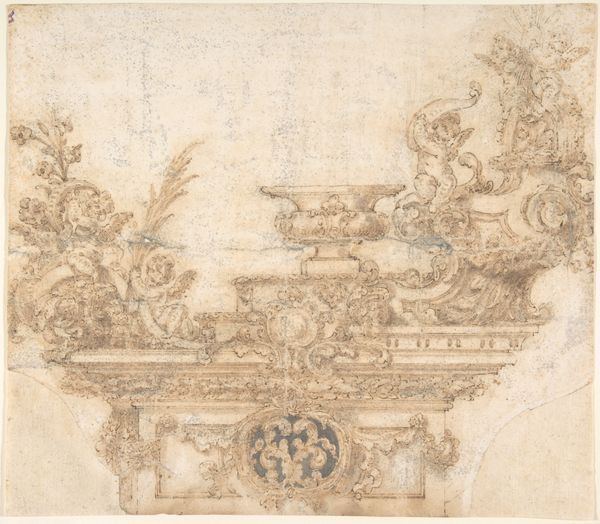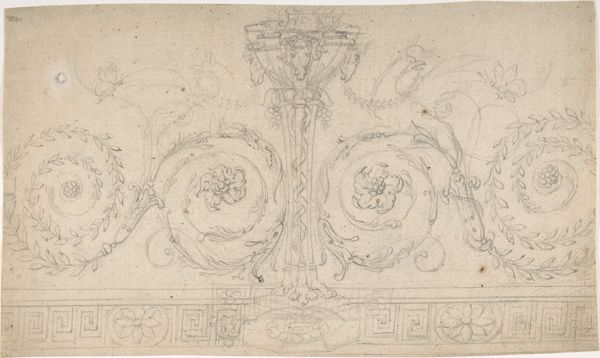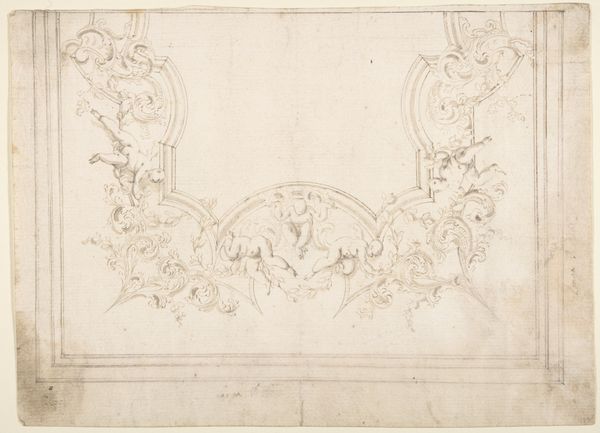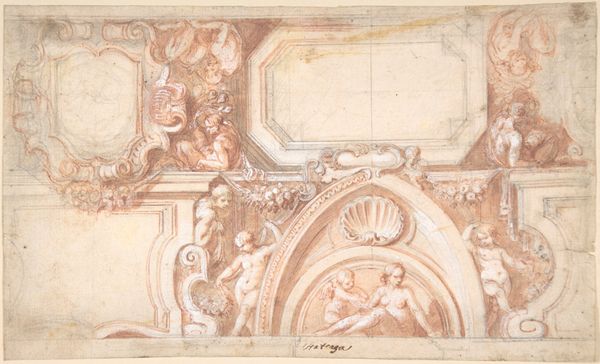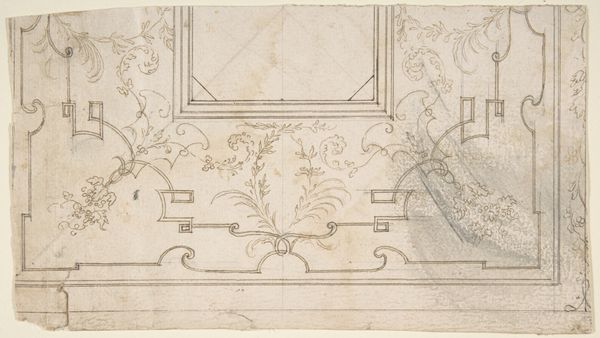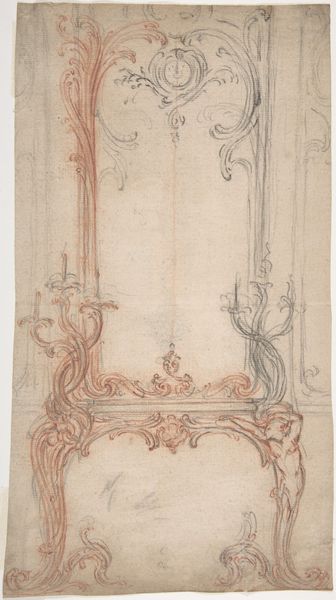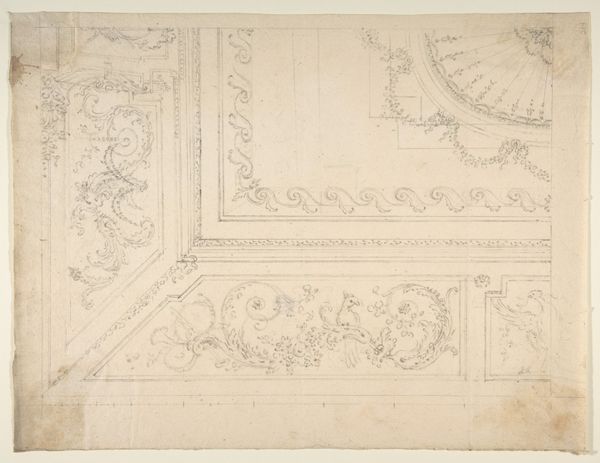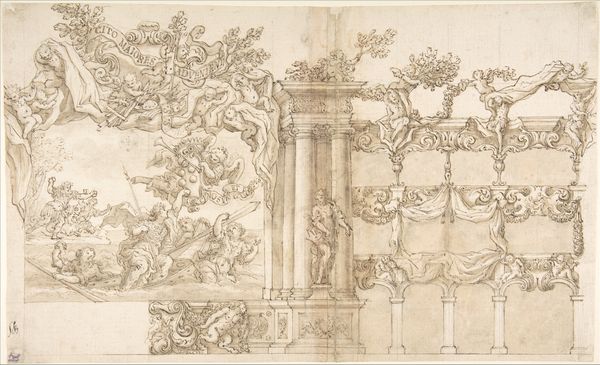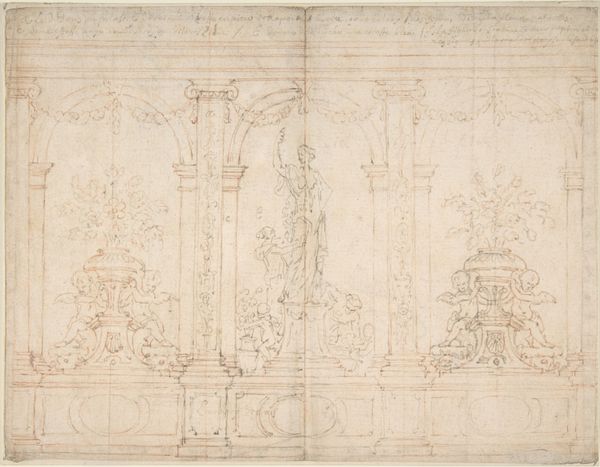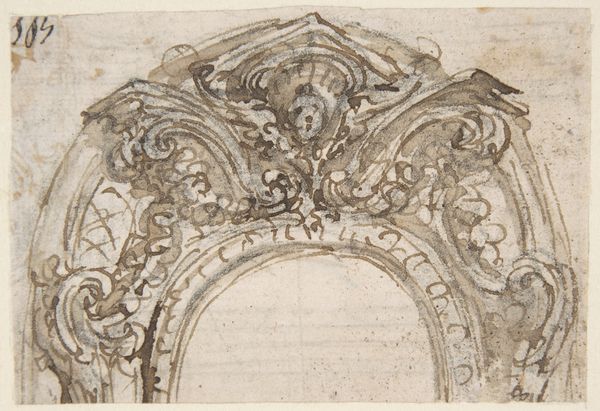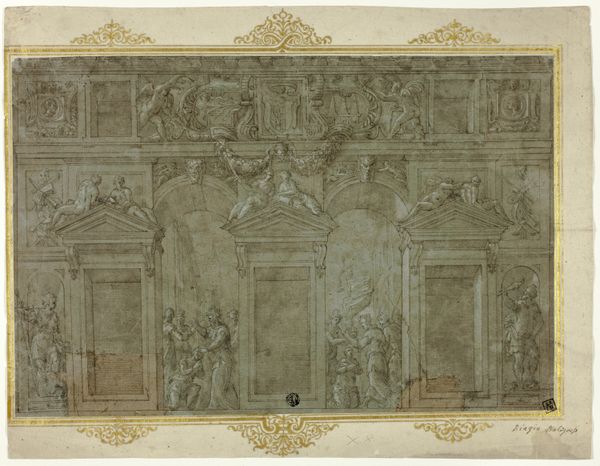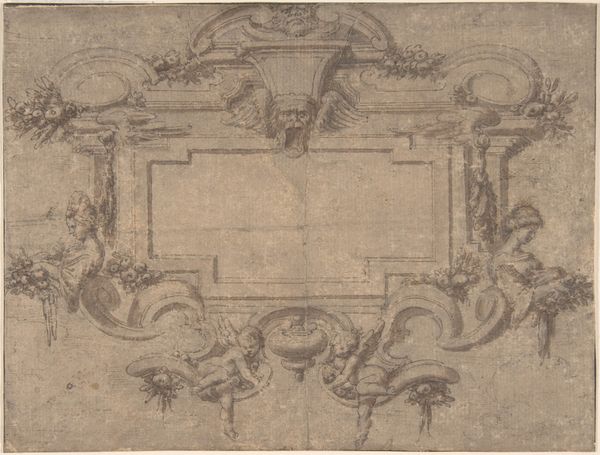
drawing, print, etching, architecture
#
drawing
#
allegory
#
baroque
# print
#
etching
#
etching
#
geometric
#
history-painting
#
architecture
Dimensions: 10 7/16 x 15 3/16 in. (26.5 x 38.5 cm)
Copyright: Public Domain
Editor: So, here we have Charles de la Fosse's "Ceiling Design," dating sometime between 1645 and 1716. It’s an etching, and I find the intricate detail of the proposed ornamentation captivating, but also somewhat overwhelming. How do you interpret this work within its historical context? Curator: I see it as a powerful statement about the construction of power and identity in the Baroque era. Ceiling designs like these weren't just decorative; they were carefully orchestrated displays of wealth, status, and ideological control. Consider the figures depicted; often mythological or allegorical, they were strategically employed to legitimize the authority of those residing below. Editor: That's fascinating. It makes me think about who this design was intended for, and who would have been able to access such spaces. It feels inherently exclusive. Curator: Exactly. Access to such visual rhetoric was largely limited to the aristocracy and the clergy. The elaborate designs reinforced social hierarchies, and helped to define what was considered "civilized" and "culturally valuable." Can you see how the geometry and the implied symmetry of the design reflects a desire for control and order? Editor: Now that you mention it, I do. The rigid structure contrasting with the fluidity of the figures in the clouds is really striking. Curator: And that contrast isn't accidental. The swirling clouds, with their loose representation, could represent aspirations. However, this yearning, still operates within firm social parameters, which were non-negotiable during that time. How do you think contemporary audiences respond to this kind of artwork, given our increased awareness of social inequality? Editor: I think it's important to confront the legacy of artworks like this. Acknowledging the exclusionary practices inherent in their creation is essential for a more inclusive understanding of art history. I never would have thought to analyse ceiling art through a sociological lens. Curator: Absolutely. By critically engaging with the art of the past, we can better understand how power operates in the present.
Comments
No comments
Be the first to comment and join the conversation on the ultimate creative platform.
